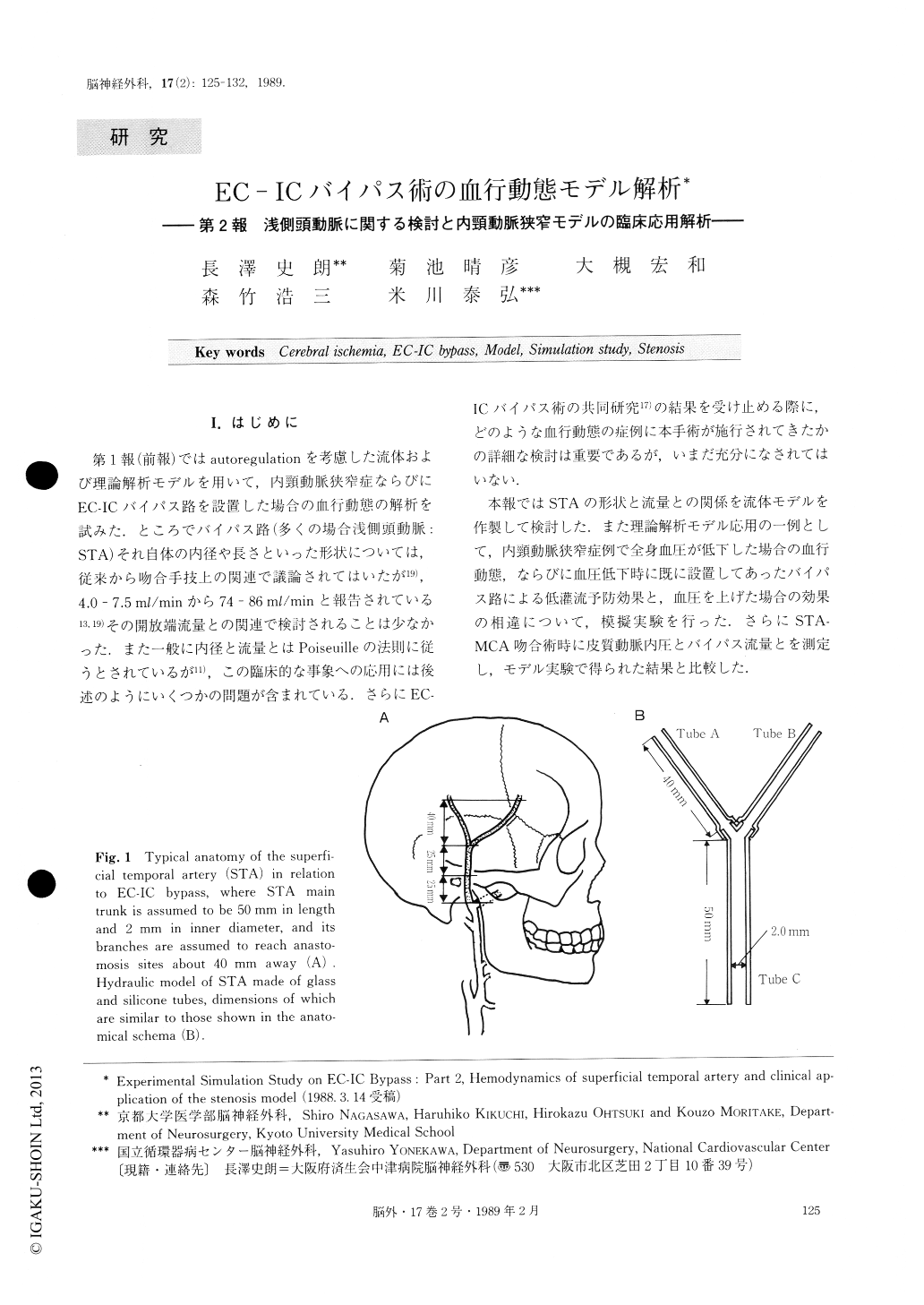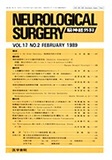Japanese
English
- 有料閲覧
- Abstract 文献概要
- 1ページ目 Look Inside
I.はじめに
第1報(前報)ではautoregulationを考慮した流体および理論解析モデルを用いて,内頸動脈狭窄症ならびにEC-ICバイパス路を設置した場合の血行動態の解析を試みた.ところでバイパス路(多くの場合浅側頭動脈:STA)それ自体の内径や長さといった形状については,従来から吻合手技上の関連で議論されてはいたが19),4,0-7,5ml/minから74-86ml/minと報告されている13,19)その開放端流量との関連で検討されることは少なかった.また一般に内径と流量とはPoiseuilleの法則に従うとされているが11),この臨床的な事象への応用には後述のようにいくつかの問題が含まれている.さらにEC—ICバイパス術の共同研究17)の結果を受け止める際に,どのような血行動態の症例に本手術が施行されてきたかの詳細な検討は重要であるが,いまだ充分になされてはいない.
本報ではSTAの形状と流量との関係を流体モデルを作製して検討した.また理論解析モデル応用の一例として,内頸動脈狭窄症例で全身血圧が低下した場合の血行動態,ならびに血圧低下時に既に設置してあったバイパス路による低灌流予防効果と,血圧を上げた場合の効果の相違について,模擬実験を行った.さらにSTA—MCA吻合術時に皮質動脈内圧とバイパス流量とを測定し,モデル実験で得られた結果と比較した.
In the preceding paper, Part 1, hemoclynamics of the internal carotid artery stenosis and their changes after EC-IC bypass have been simulated and discussed in hydraulic and theoretical vascular models. In this study, theoretical model simulation (Fig. 2) has been advanced and applied to evaluate possible hemodynamic changes clue to systemic blood pressure drop and to discuss the difference in efficacy between bypass and pressure elevation for its treatment.
Dimensions of the STA have been referred to some-times in relation to the technical problems for anasto-mosis but rarely for its cut bypass flow values.

Copyright © 1989, Igaku-Shoin Ltd. All rights reserved.


